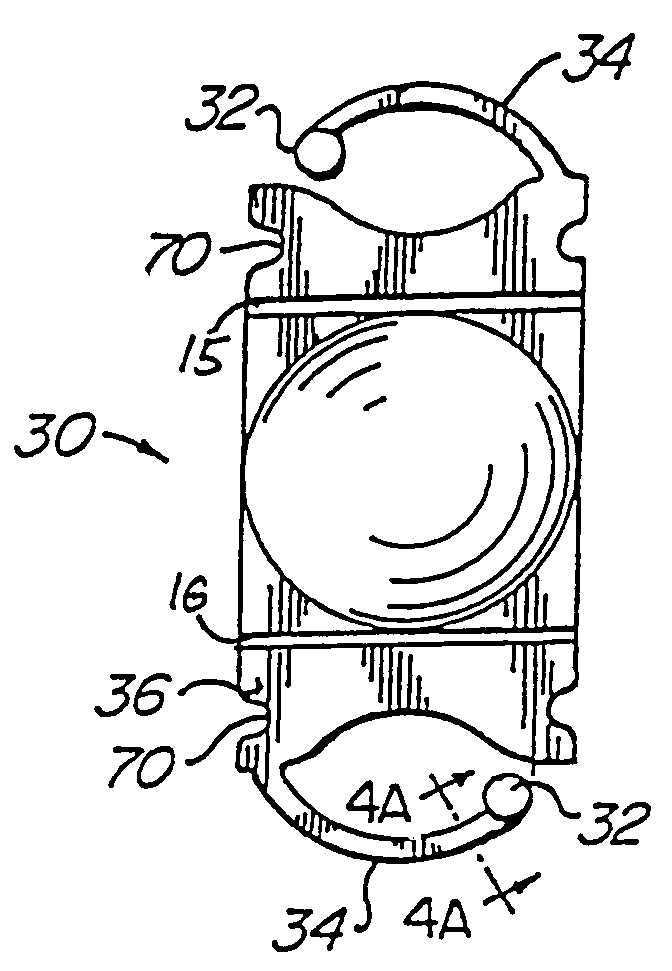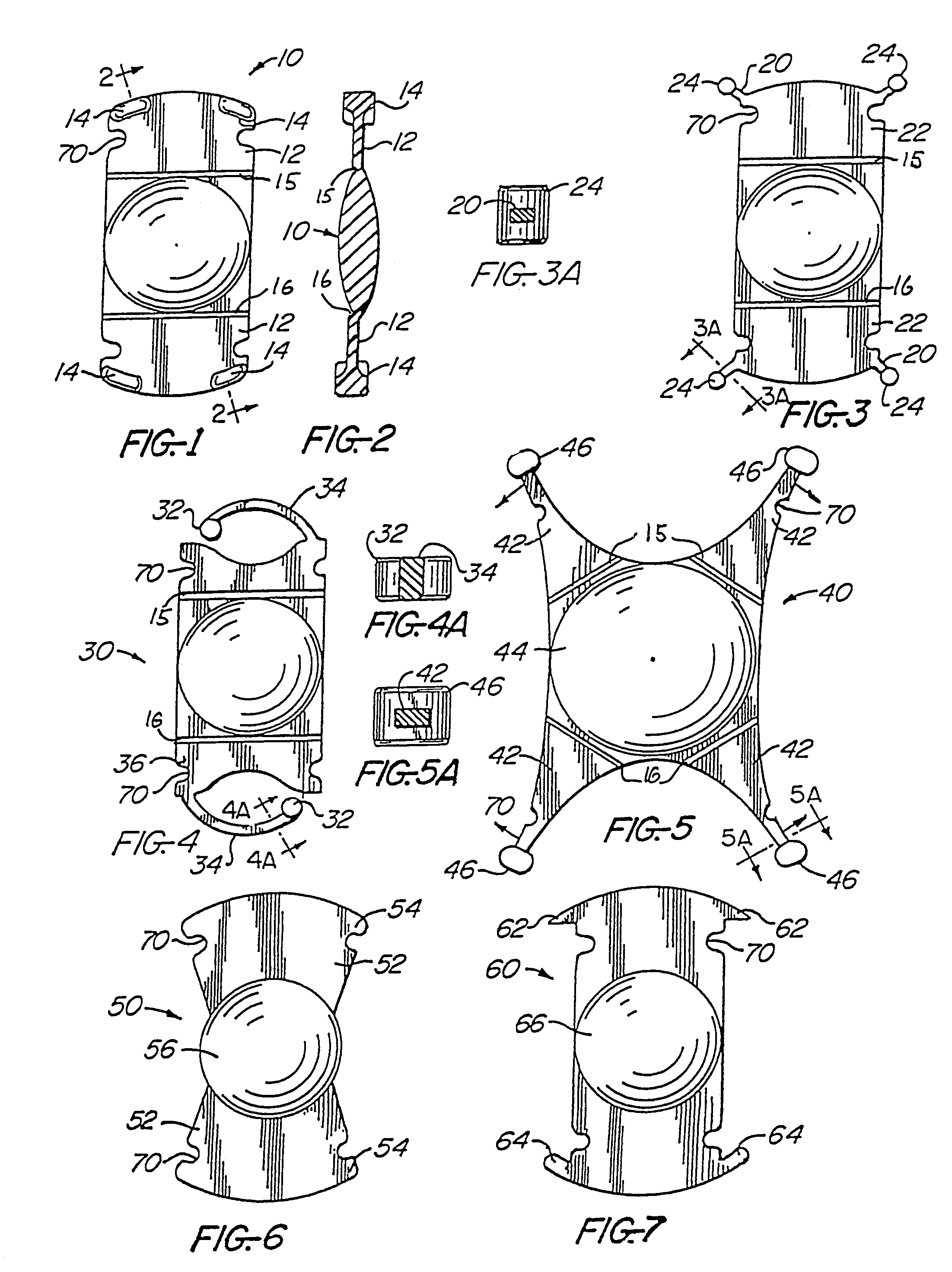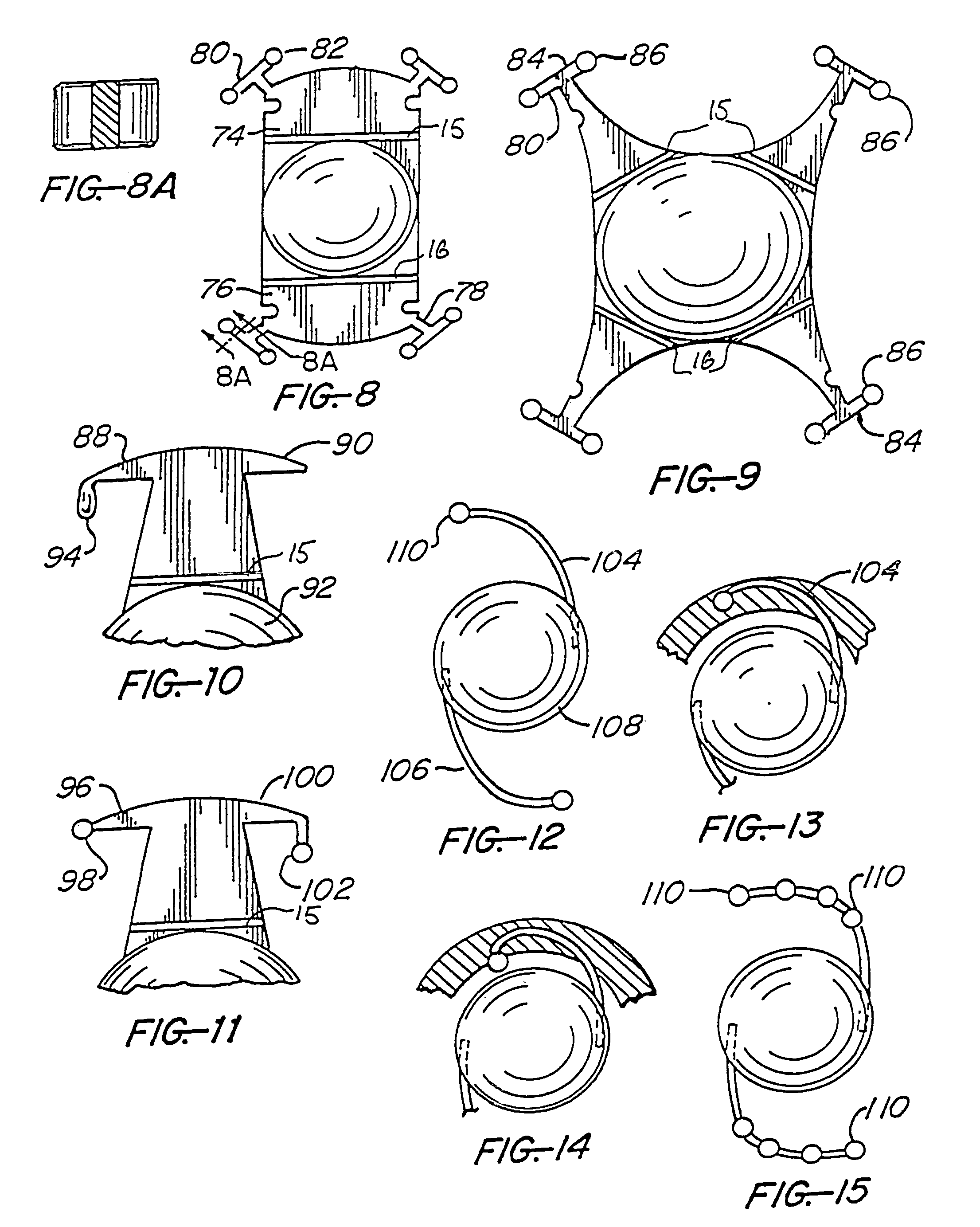Intraocular lenses with fixated haptics
a technology of haptic lenses and fixed haptics, which is applied in the field of intraocular lenses with fixated haptics, can solve the problems of only being able to implant plate haptic lenses without loops or fixation means, serious complications of surgery, etc., and achieve the effect of preventing dislocation and slipping and preventing the dislocation of intraocular lenses
- Summary
- Abstract
- Description
- Claims
- Application Information
AI Technical Summary
Benefits of technology
Problems solved by technology
Method used
Image
Examples
embodiment 10
[0047]Referring to the drawings, and particularly to FIG. 1, a preferred embodiment 10 has a distal portion of a plate haptic 12 with protuberances 14 thereon and Hinges 15 and 16. The sectional view of FIG. 2 shows the configuration of the protuberances which extend from both sides of haptic 12. A protuberance may extend from only one side or surface of the haptic or from many sides or surfaces. The protuberances will not pass or slide through a fibrosis tunnel or pocket disposed about proximally adjacent smaller dimensional portions of the haptic.
[0048]FIGS. 3 and 3A illustrate an embodiment wherein flexible extensions 20 extend diagonally from distal corners of lens plate haptics 22, and have protuberances 24 at their ends. Extensions 20 position the protuberances laterally and distally outwardly of the edges of the haptic, so that they are prevented from moving or sliding through a pocket defined by fibrosis about the proximally inward portions of the haptics. FIG. 3A shows the ...
embodiment 30
[0049]FIGS. 4 and 4A illustrate an embodiment 30 wherein protuberances 32 extend outwardly from spring loops or fingers 34 which extend from distal portions of plate haptics 36. The protuberances 32 prevent the loop and the distal portions of the haptic plates from moving or sliding relative to fibrosis pockets formed about the loop and distal haptic portions. FIG. 4A shows in cross-section the configuration of the protuberances at the ends of the loops. A lens (not shown) generally similar to that of FIG. 4, may have a loop element attached to a haptic plate, as by fusion of adhesure, rather than being integrally formed with the plate.
embodiment 40
[0050]FIG. 5 illustrates an embodiment 40 of the invention wherein a plurality of haptics 42 are symmetrically tapered outwardly from relatively wide proximal ends joined to an optic 44 to relatively narrow distal ends or fingers whereon protuberances 46 are disposed. FIG. 5A shows protuberance details.
PUM
 Login to View More
Login to View More Abstract
Description
Claims
Application Information
 Login to View More
Login to View More - R&D
- Intellectual Property
- Life Sciences
- Materials
- Tech Scout
- Unparalleled Data Quality
- Higher Quality Content
- 60% Fewer Hallucinations
Browse by: Latest US Patents, China's latest patents, Technical Efficacy Thesaurus, Application Domain, Technology Topic, Popular Technical Reports.
© 2025 PatSnap. All rights reserved.Legal|Privacy policy|Modern Slavery Act Transparency Statement|Sitemap|About US| Contact US: help@patsnap.com



